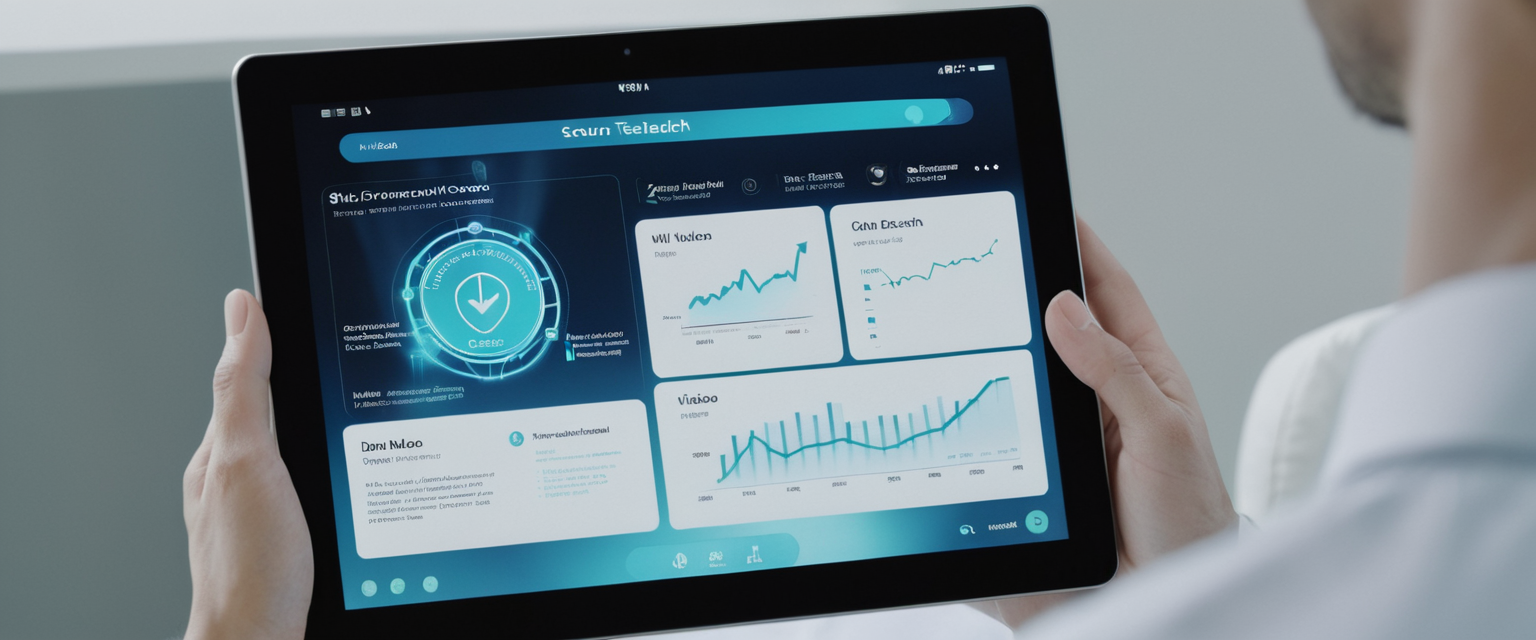
Telehealth has fundamentally transformed healthcare delivery, enabling patients to access medical services remotely through digital platforms and video conferencing technologies. However, this technological revolution has simultaneously introduced significant challenges to protecting sensitive patient information. The security and privacy of telehealth records represent one of the most critical concerns facing modern healthcare providers, particularly as the volume of remotely transmitted protected health information continues to expand. Healthcare data breaches have reached unprecedented levels, with 2024 seeing over 276 million records exposed or stolen, representing an average of 758,288 breached records per day. The protection of telehealth records through encrypted file storage and secure document management systems has become not merely an operational best practice but an absolute regulatory and ethical imperative. This comprehensive analysis examines the multifaceted privacy considerations surrounding telehealth records, exploring the regulatory requirements, technical safeguards, organizational challenges, and emerging solutions that healthcare providers must implement to maintain patient confidentiality and comply with federal and state privacy laws.
Regulatory Framework and Legal Foundation for Telehealth Privacy Protection
Understanding HIPAA’s Application to Telehealth Services
The Health Insurance Portability and Accountability Act, enacted in 1996, remains the foundational federal privacy law governing the protection of patient health information in the United States. The HIPAA Privacy Rule requires an individual’s authorization—through signed permission—to allow a covered entity to use or disclose their protected health information. At minimum, a valid authorization must contain several core elements: a description of the information to be used or disclosed, identification of persons authorized to make the requested use or disclosure, identification of those to whom the covered entity may make the disclosure, a description of each purpose of the disclosure, and an expiration date with respect to each purpose. This foundational requirement means that telehealth providers must obtain explicit patient consent before transmitting, storing, or sharing any health information collected during remote consultations. The Security Rule, which operates alongside the Privacy Rule, requires covered entities to use appropriate administrative, physical, and technical safeguards to protect the confidentiality, integrity, and security of electronic protected health information that they create, receive, use, maintain, or transmit. Importantly, the rules surrounding these safeguards are designed to be flexible and scalable, allowing covered entities to implement policies, procedures, and technologies that are appropriate for their particular size and capabilities. A major principle underlying HIPAA safeguards is the “minimum necessary” standard, which requires covered entities to request, use, and disclose PHI only to the minimum extent necessary to complete a task.
Telehealth services provided by covered health care providers and health plans must comply with all HIPAA Rules. This compliance obligation extends beyond the primary provider-patient relationship to include all third-party vendors, service providers, and business associates who handle protected health information in connection with telehealth services. The HIPAA framework specifically addresses the unique challenges of remote healthcare delivery, recognizing that telehealth consultations create distinct privacy and security risks compared to traditional face-to-face encounters. Healthcare professionals providing telehealth services encounter particular challenges during initial consultations, especially regarding patient identity verification. When a patient has been referred from one covered entity to another with whom there is no previous treatment relationship, or when consultation is hosted at a remote facility managed by a different healthcare provider because the patient lacks access to telehealth technology, establishing and confirming patient identity becomes substantially more complex than in traditional settings. Additionally, once patient identity has been verified, maintaining the privacy of the consultation itself presents ongoing challenges. Healthcare providers may need to obtain recorded consent to continue with consultation when a translator, caregiver, or family member is present, or when the patient is in a public location where conversation may be overheard. The reality of contemporary telehealth is that patients frequently conduct consultations from various locations—at work, at the gym, on public transportation, or in shared living spaces—creating inherent privacy risks regardless of the provider’s technological safeguards.
Business Associate Agreements and Third-Party Accountability
A critical element of HIPAA compliance in telehealth contexts is the Business Associate Agreement, a legally binding contract between healthcare providers (covered entities) and service providers (business associates) that establishes how protected health information will be protected. Any person or entity that performs functions involving the use of or access to protected health information in order to provide services on behalf of a covered entity is considered a business associate. For telehealth services, business associates may include software vendors providing telehealth platforms, cloud storage providers, communication service providers, electronic health record vendors, and any other third parties with access to PHI. The BAA is essentially a promise between two parties to keep patient information safe and secure, establishing clear responsibilities for both the healthcare provider and the service provider. Without a signed BAA, a video conferencing platform or file storage solution cannot be considered HIPAA compliant, regardless of how secure its technology may appear. Using non-HIPAA-compliant platforms for telehealth can lead to severe penalties, including hefty fines and damage to professional reputation.
The BAA clearly defines roles, responsibilities, and expectations between a covered entity and a business associate regarding the handling of PHI. The agreement must describe the permitted and required uses of protected health information by the business associate, provide that the business associate will not use or further disclose the protected health information other than as permitted or required by the contract or as required by law, and require the business associate to use appropriate safeguards to prevent use or disclosure of the protected health information other than as provided for by the contract. Where a covered entity knows of a material breach or violation by the business associate of the contract or agreement, the covered entity is required to take reasonable steps to cure the breach or end the violation, and if such steps are unsuccessful, to terminate the contract or arrangement. If termination of the contract is not feasible, the covered entity is required to report the problem to the Department of Health and Human Services Office for Civil Rights.
State-Specific Requirements and Informed Consent
Beyond federal HIPAA requirements, the majority of states include some form of telehealth-specific informed consent requirement in their statutes, administrative codes, and Medicaid policies. Most states require providers to obtain official informed consent from patients before providing treatment using telehealth. These consent requirements typically mandate that healthcare providers, at the time of initial telehealth interaction, inform the patient about the use of telehealth and obtain verbal or written consent for the use of telehealth as an acceptable mode of delivering health care services. The consent shall be documented in the patient’s medical record. Informed consent for behavioral health telehealth must cover concerns unique to the receipt of psychological health care services via telehealth, including risks to confidentiality and security, data storage policies and procedures specific to telehealth, the possibility of disruption and/or interruption of service due to technological failure, insurance coverage considerations, and other issues that the licensee can reasonably anticipate regarding the non-comparability between psychological health care services delivered in person and those delivered via telehealth.
These state-level consent requirements reflect recognition that telehealth introduces unique privacy and security risks that patients should understand and explicitly accept. The informed consent process serves not merely as a compliance formality but as an opportunity to educate patients about how their health information will be collected, transmitted, stored, and protected throughout the telehealth encounter. Healthcare providers must ensure that patients receive clear, comprehensible information about the telehealth platform being used, the security measures implemented, potential risks to privacy, and the patient’s rights regarding their health information.
Security Architecture for Telehealth Records Protection
Technical Safeguards and Encryption Requirements
The HIPAA Security Rule requires covered entities to implement a comprehensive range of technical safeguards to protect electronic protected health information. Encryption represents one of the most critical technical safeguards, particularly for telehealth applications where patient information is transmitted across potentially unsecured networks and stored on remote servers. In cloud-based healthcare environments, encryption must cover every state of data: at rest, in transit, and increasingly, in use. Traditional encryption that protects data only during storage and transmission leaves a gap when data is being processed or actively used, which is a particular concern in dynamic, cloud-based EHR environments where data is accessed via APIs or shared across entities.
For telehealth records specifically, encryption ensures that even if unauthorized individuals gain access to transmitted or stored information, the data remains unreadable and therefore useless. End-to-end encryption is particularly important for telehealth video consultations and secure messaging, as it ensures that only the intended sender and recipient can decrypt and read the content. When evaluating telehealth platforms, healthcare providers should confirm that all communications—whether video, phone, messaging, or document sharing—are encrypted to restrict unauthorized access. This encryption should be implemented using standards recommended by the National Institute of Standards and Technology, typically 256-bit AES encryption or equivalent.
The unique challenges of telehealth encryption are compounded by the need to maintain high availability while ensuring security. Unlike traditional on-premises systems, cloud-based telehealth platforms must balance the need for rapid access to patient information with the necessity of preventing unauthorized access. Advanced encryption techniques such as proxy re-encryption allow encrypted data to be transformed or “re-encrypted” from one user’s encryption key to another’s without ever exposing the plaintext or private keys. This technology is particularly valuable in telehealth contexts where patient data must be securely shared between multiple providers, specialists, laboratories, and healthcare facilities without requiring full decryption and re-encryption at intermediate points, which represents a security risk.
Access Controls and Authentication Mechanisms
Beyond encryption, comprehensive access control mechanisms are essential for protecting telehealth records. Traditional Role-Based Access Control, which assigns permissions based on predefined roles such as nurse, administrator, or physician, is no longer sufficient for the dynamic, high-risk environment of cloud-based telehealth systems. Instead, Attribute-Based Access Control employs dynamic rules considering contextual factors such as time of access, location, patient consent, and device type to assess access requests before granting authorization. This more sophisticated approach recognizes that legitimate healthcare personnel may require different levels of access depending on specific clinical circumstances and contexts.
Multi-factor authentication represents another essential security control for telehealth systems. Multi-factor authentication requires users to provide multiple forms of identification—such as a password, a security token, and biometric verification—before gaining access to protected health information. Research demonstrates that multi-factor authentication can block up to 99 percent of automated cyberattacks. When evaluating telehealth platforms, healthcare providers should ensure that the platform implements MFA and secure login procedures with strong credential management. User identification and authentication should be based on unique credentials, with systems maintaining unique user identification numbers, employing emergency access procedures, implementing automatic logoff after periods of inactivity, and establishing encrypted communications for secure authentication.
Audit logging capabilities are fundamental to both security monitoring and compliance verification. Any telehealth platform used should have the ability to track data use and disclosure, distinguishing PHI access on a per-user basis. Comprehensive audit logs document who accessed which patient records, when they accessed them, what actions they performed, and from which device or location. These immutable logs enable healthcare organizations to ensure adherence to the minimum necessary standard, facilitate early detection of breaches, and provide critical evidence for incident investigations. In the event of a data breach or security incident, audit logs are essential for determining the scope of unauthorized access and documenting what corrective actions were implemented.
Privacy Challenges and Risk Factors in Telehealth Environments
Environmental Risk Factors and Physical Security Challenges
A systematic review of telehealth privacy and security literature identified three primary categories of risk factors affecting telehealth services: environmental factors, technological factors, and operational factors. Environmental factors refer to an individual’s surroundings, living conditions, and social connections that directly or indirectly impact privacy and security protections. Vulnerable populations such as the homeless, elderly, adolescents, and those experiencing mental health challenges are often particularly concerned about the lack of private space for telehealth visits. The physical environment where a telehealth visit occurs fundamentally shapes the privacy protections available during that encounter.
For patients, environmental privacy risks include being overheard in the patient’s or provider’s home, navigating disruptions in their living space, lacking proper equipment such as headphones, and unintended visualization of the patient’s living conditions by the provider. In many households, large numbers of occupants sharing limited space create practical impossibility of finding a truly private location for confidential medical consultations. Particularly concerning are situations where vulnerable populations, including homeless individuals, lack any truly private space at all where they might conduct a telehealth consultation without risk of being overheard. Additionally, videoconferencing may inadvertently expose the patient’s living conditions—poverty, hoarding, illness, or social circumstances—that the patient may not wish to disclose.
For healthcare providers, environmental privacy risks are equally significant. Providers may need to conduct consultations from a busy office, from home, or from a public location with substantial background noise that makes it impossible to reduce the volume of their voice. Providers may lack adequate private workspace for personnel and face difficulty in maintaining awareness of their surroundings to protect patient privacy. In such circumstances, it may be necessary to reschedule the consultation or explain to the patient that the personal information they can disclose will be limited. The location of the healthcare provider becomes a HIPAA compliance challenge, as providers are obligated to ensure that patient information is not inadvertently disclosed to third parties through ambient conversation, visible screens, or background visibility in video calls.
Technological Risk Factors and Cybersecurity Threats
Technological risk factors in telehealth include data security issues, limited access to internet and technology, lack of digital devices or cellular data, poor digital literacy among patients and providers, and inadequate audio or video quality. A study examining 51 telehealth apps found that only 28 percent had a privacy policy in place, while only 16 percent had a security policy, indicating significant vulnerability in many widely available telehealth applications. The rapid adoption of telehealth technology has led to a significantly increased digital footprint and vulnerability to cyberattacks, leaving both provider and patient data at substantial risk.
The cybersecurity threats facing telehealth platforms are diverse and multifaceted. Data breaches occur when unauthorized individuals gain access to sensitive patient data stored on telehealth platforms, potentially exposing personal identification information, medical history, and financial details. SQL injection attacks occur when an unintended query is entered into a database application, potentially dangerous for telemedicine platforms because it can lead to unauthorized access to sensitive patient data stored in the database. Cross-site scripting attacks involve injecting malicious scripts into content from otherwise trusted websites, which for telemedicine platforms could mean unauthorized execution of scripts in a user’s browser, compromising the integrity of the platform and confidentiality of patient information.
Ransomware and phishing attacks represent particularly common cybersecurity threats faced by healthcare organizations. Ransomware typically uses one or several types of malware to hack into an organization by encrypting the victim’s information, followed by threats from hackers to sell or expose the information to the public if ransom is not paid. Phishing attacks use social engineering techniques to trick individuals and organizations into divulging information or performing activities such as clicking on a link or downloading a file, which attackers typically use to redirect receivers to websites that collect their information or prompt download of malicious software. A 2020 HIMSS Cybersecurity Survey found that approximately 70 percent of surveyed healthcare security professionals reported their organizations had experienced significant security incidents in the past year, with phishing attacks being the most common.
The scale of healthcare cyberattacks continues to escalate. In the first nine months of 2025, 293 ransomware attacks were recorded on hospitals, clinics, and other direct care providers, with an additional 130 attacks targeting healthcare businesses. Attacks on healthcare businesses rose by 30 percent compared to the same period in 2024. The confirmed attacks resulted in the breach of over 7.4 million records from healthcare providers and over 6 million records from healthcare businesses, with average ransom demands exceeding $514,000 from healthcare providers and $532,000 from healthcare businesses. The most prolific ransomware strains targeting healthcare providers included INC, Qilin, SafePay, RansomHub, and Medusa.
Operational Risk Factors and Organizational Challenges
Operational risk factors in telehealth include privacy and security concerns, reimbursement and payer denials, technology accessibility challenges, insufficient training and education, and maintenance and updating of devices. Healthcare providers face organizational challenges in ensuring that telehealth systems remain updated, that staff receive adequate training on security protocols, and that organizations develop and enforce clear policies for secure telehealth practices. A survey conducted by Arlington Research in 2021 found that 52 percent of surveyed telehealth providers reported experiencing cases of patients refusing telehealth treatment because of data security and privacy concerns. Additionally, approximately 32 percent of healthcare professionals in the survey did not know whether practicing telemedicine over the telehealth network would increase the risk of security and privacy violations, underscoring the importance of educating telehealth professionals about the security features of telehealth networks.
Training and education represent critical operational factors affecting telehealth security. Healthcare providers must ensure that all personnel involved in telehealth service delivery receive comprehensive training on HIPAA compliance requirements, the specific security features of the telehealth platform being used, identification and response to potential security threats, and best practices for protecting patient privacy in remote settings. Staff training should address common attack vectors such as phishing emails, the importance of strong password practices, proper handling and storage of patient devices, and recognition of when access credentials may have been compromised. Additionally, procedures must be established to ensure that business associates report all security incidents as required by HIPAA regulations, particularly regarding situations when access credentials are known to have been compromised.

HIPAA-Compliant Cloud Storage and Encrypted File Storage Solutions
Selecting and Evaluating Cloud Storage Providers
The use of cloud-based storage for telehealth records has become increasingly common, driven by the need for accessibility, scalability, and disaster recovery capabilities. However, selecting an appropriate HIPAA-compliant cloud storage solution requires careful evaluation of multiple technical and contractual criteria. Any cloud storage platform must satisfy all relevant provisions of the HIPAA Privacy and Security Rules before it can be used in connection with protected health information. HIPAA requires covered entities to obtain reasonable assurances that a service provider is compliant with HIPAA, which is achieved through the business associate agreement. Before implementing any cloud storage solution, healthcare organizations must ensure that the provider is willing to sign a BAA and that this agreement includes all required contractual elements.
Several cloud storage providers offer HIPAA-aligned features and compliance certifications. Box is a popular choice for securely handling DICOM files, including X-rays, ultrasounds, and CT scans, offering encryption, access restrictions, audit trails, and disaster recovery capabilities. Carbonite has long been recognized for HIPAA-compliant backups, with 256-bit AES encryption, Transport Layer Security, and safeguards against human error, helping protect electronic PHI at rest and in transit. Dropbox Business supports HIPAA compliance through configurable sharing permissions, activity monitoring, and encryption, making third-party audit reports available to give IT teams visibility into security posture. Microsoft OneDrive and Google Cloud also offer HIPAA-aligned features when configured correctly and covered by appropriate business associate agreements. Tresorit provides end-to-end encryption of patient data and is a HIPAA compliant, G-Cloud 9 approved file sharing service trusted by hundreds of hospitals and healthcare professionals.
When evaluating HIPAA cloud storage solutions, healthcare organizations should prioritize several key features. Data must be encrypted both at rest and in transit using standards recommended by the National Institute of Standards and Technology. The hosting provider must offer a service level agreement guaranteeing high performance and near 100 percent uptime to ensure that all stored data can be accessed when required. Access controls must allow healthcare organizations to control who can access patient data, with the ability to segment permissions based on role and clinical necessity. Audit logging capabilities should document all access to PHI with granular detail showing who accessed what information, when, from which device, and what actions were performed. The provider should conduct regular, rigorous assessments to ensure its platform remains secure and in compliance with HIPAA. Additionally, the hosting company should have a robust disaster recovery plan to ensure data can be recovered in the event of disaster, including offsite backup storage.
Data Retention and Secure Destruction Requirements
HIPAA’s administrative requirements specify that healthcare entities must keep records related to their privacy and security practices for a minimum of six years. These records include privacy and security policies demonstrating how the organization protects PHI, risk assessments evaluating potential risks to the security of PHI, workforce training documentation proving employees have been trained on HIPAA compliance and data security practices, and security incidents and breach reports including actions taken to mitigate incidents. Although HIPAA does not explicitly require retention of medical records for a specific length of time at the federal level, the Privacy Rule amendment states that PHI can be requested by patients “for as long as Protected Health Information is maintained in a designated record set. Other regulations may dictate longer retention periods; for example, Medicare providers are expected to retain records for 10 years according to Centers for Medicare and Medicaid Services guidelines. State laws also frequently establish retention periods for medical records, which can range from five to ten years depending on the state. Healthcare organizations must carefully assess applicable retention requirements at both federal and state levels and ensure their data storage and destruction policies comply with the most stringent applicable requirements.
When the retention period expires and records are no longer required to be maintained, healthcare organizations must implement secure destruction procedures to ensure that PHI cannot be recovered or reconstructed. Secure destruction methods should include physical destruction of electronic media containing PHI, cryptographic erasure that renders data unrecoverable, or other methods approved by the National Institute of Standards and Technology. Healthcare organizations should maintain documentation of destruction procedures and verify that destruction has been completed. Particularly sensitive is the destruction of backup copies and archives, which must be destroyed using similarly secure methods to ensure no residual copies of PHI remain accessible.
Business Associate Agreements and Third-Party Vendor Management
Comprehensive Vendor Risk Assessment Procedures
Given that many telehealth services involve third-party vendors and business associates, comprehensive vendor risk management is essential to protecting patient data. Telehealth vendor risk management involves identifying, assessing, and mitigating risks associated with third-party telehealth platforms, including security, privacy, and compliance concerns. Effective vendor risk management begins with initial risk assessment and vendor discovery, which involves identifying telehealth vendors and assessing their associated risks. This step includes evaluating how vendors handle protected health information, the security measures they implement, their compliance certifications, their incident response procedures, and their financial stability to ensure they can sustain their services long-term.
When conducting vendor risk assessments, healthcare organizations should evaluate whether the vendor will sign a Business Associate Agreement and what specific contractual protections are included in that agreement. The organization should confirm that the vendor offers a secure connection with encryption for all communications, whether through video, phone, messaging, or document transfer. Healthcare organizations should determine how the vendor differentiates access to data and whether the platform allows implementation of role-based access controls reflecting the minimum necessary principle. Vendors should maintain comprehensive audit logs distinguishing PHI access on a per-user basis. Organizations should inquire about the vendor’s backup and disaster recovery procedures to understand what protections exist if data becomes unavailable or corrupted.
Beyond initial assessment, healthcare organizations should conduct ongoing monitoring of third-party vendors to ensure continued compliance with contractual obligations and regulatory requirements. This ongoing vendor oversight should include periodic verification that the vendor maintains appropriate security measures, prompt notification of any security incidents or breaches, proof of workforce training on data security and privacy practices, and evidence of regular security assessments. Many healthcare organizations are implementing formal vendor governance programs that establish clear performance standards, require regular compliance audits, define service level agreements with specific remedies for non-performance, and establish clear escalation procedures and termination processes if vendors fail to maintain compliance.
Contract Provisions and Liability Allocation
Business Associate Agreements must include specific contract provisions addressing how protected health information will be handled. The contract must describe the permitted and required uses of protected health information by the business associate, making clear that the business associate will not use or further disclose protected health information other than as permitted or required by the contract or as required by law. The agreement must require the business associate to use appropriate safeguards to prevent use or disclosure of protected health information other than as provided for by the contract. The agreement must require the business associate to report all security incidents to the covered entity as required by HIPAA regulations.
Additionally, BAAs should establish liability allocation between the covered entity and business associate. Where a covered entity knows of a material breach or violation by the business associate of the contract or agreement, the covered entity is required to take reasonable steps to cure the breach or end the violation, and if such steps are unsuccessful, to terminate the contract or arrangement. BAAs should define what constitutes a material breach, establish timelines for notification of breaches, specify what corrective actions the business associate must take, and establish termination rights if the business associate fails to cure material breaches. The agreement should also address post-termination obligations, specifying that the business associate must return or securely destroy all protected health information upon contract termination and providing assurances that no copies of PHI will be retained.
Data Breach Prevention, Detection, and Incident Response
Comprehensive Risk Analysis and Security Assessment
Preparation for data breach prevention begins with comprehensive risk analysis examining the entire telehealth infrastructure, policies, and practices. The risk analysis required by the HIPAA Security Rule should be extended to uses and disclosures of PHI during remote communications. This extended risk analysis should examine how healthcare professionals communicate with patients and business associates, document what communication methods are used and whether those methods are secure, identify and analyze risks to the privacy of health information and the security of electronic transmissions, assess whether current policies and procedures adequately address telehealth-specific risks, and develop policies to mitigate identified risks. Organizations should use the HIPAA Security Risk Assessment Tool developed by the Office of the National Coordinator for Health Information Technology to conduct thorough and systematic assessments.
Conducting a risk analysis is not a one-time event but an ongoing process that should be updated whenever significant changes occur to telehealth infrastructure, personnel, policies, or threat environments. Healthcare organizations should establish regular schedules for reviewing and updating risk analyses, ideally incorporating emerging threat intelligence and lessons learned from recent data breaches in the healthcare industry. The risk analysis should specifically address complex telemedicine frameworks—for example, when a HIPAA-compliant telemedicine platform connects directly with an EHR—recognizing that these integrations create additional security considerations beyond the individual systems involved.
Breach Detection and Forensic Investigation
When healthcare organizations suspect that a data breach has occurred, they must implement their incident response plan and undertake prompt investigation. The first critical step is stopping the leak or breach—shutting down the access rights being abused, taking down mistakenly posted records, or otherwise ceasing the unauthorized access or disclosure. However, any action taken to stop the leak should be undertaken with an understanding of how that action could affect document preservation for potential legal proceedings.
Healthcare organizations should perform an initial assessment asking: What type of information was exposed? Does it constitute a “breach” under relevant state law definitions and HIPAA definitions? If the incident involves unencrypted protected health information, under HIPAA it is presumptively a breach unless the risk assessment demonstrates a low probability that the protected health information has been compromised or an exception applies. The risk assessment should consider the nature and extent of the information involved, who the information was used by or disclosed to, whether it was actually acquired or viewed, and the extent of mitigation.
When a breach is confirmed, counsel should retain a forensic firm to preserve privilege and gather a full understanding of the breach, including its cause, what information systems or devices were affected, how the compromise occurred, and when it was discovered. Forensic investigation should preserve all evidence related to the breach, document the timeline of the incident, identify affected individuals and systems, and establish whether the breach resulted from external attackers, insider threats, or inadvertent disclosure. The forensic investigation also provides essential information needed for breach notification, regulatory reporting, and potential legal proceedings.
Breach Notification and Regulatory Reporting Requirements
Upon discovery of a data breach, covered entities have specific notification obligations. Under HIPAA, covered entities must notify each affected person, the U.S. Department of Health and Human Services Office for Civil Rights, and potentially state attorneys general and media outlets. For individuals, notification must occur “without unreasonable delay” and within 60 calendar days after the breach is discovered. The countdown begins the day the breach becomes known to someone in the healthcare organization or the day someone should reasonably have known about it. Although the rule requires notification within 60 calendar days, it also requires acting without unreasonable delay, meaning if an organization discovers a breach and gathers necessary information within 30 days, it would be unreasonable to wait until the 60th day to notify affected individuals.
When notifying the Department of Health and Human Services Office for Civil Rights, the timing depends on the number of people affected. If the breach involves the information of 500 people or more, notification to the HHS must occur at the same time as notifications to individuals, without unreasonable delay and within 60 calendar days after discovery. If the breach involves fewer than 500 people, notification to the HHS must occur within 60 calendar days following the end of the calendar year. When at least 500 residents of a particular state, the District of Columbia, or a U.S. territory are affected, prominent media outlets serving the relevant locale must also be notified without unreasonable delay and within 60 calendar days after discovery. These notification requirements recognize that significant data breaches create public safety concerns warranting broad notification to affected individuals and the public.
Emerging Technologies for Enhanced Privacy Protection

Blockchain Technology for Healthcare Records Security
Blockchain technology represents an emerging approach to healthcare data protection that offers potential advantages for telehealth records management. A blockchain-based system for healthcare records can register patients and medical staff with unique IDs and store patient diagnoses as immutable records on the blockchain, preventing unauthorized alteration or tampering. A central interplanetary file system stores the collected data, which can be accessed by authorized users such as nurses, pharmacists, and patients via special access details. Users must log in before accessing medical records through an Electronic Record Management system, ensuring that only properly authenticated individuals can view PHI. The proposed blockchain-based system offers a secure, scalable solution for managing and accessing medical records.
The benefits of blockchain for healthcare data protection include protecting sensitive data through encryption and secure storage, making unauthorized access or misuse virtually impossible. Blockchain technology ensures data integrity by providing a tamper-proof data storage mechanism, ensuring that data remain accurate and unaltered. Blockchain can enhance interoperability by providing a secure and decentralized platform for data sharing, allowing various healthcare systems to interoperate seamlessly. By ensuring that the right data are available to the right people at the right time, a smart healthcare system based on blockchain technology can improve patient outcomes by helping clinicians make better-informed decisions and improving the quality of care. Additionally, implementing a data protection system using blockchain technology can help organizations meet regulatory requirements for patient privacy and data protection.
However, blockchain implementation faces practical challenges regarding scalability and integration with existing healthcare systems. Initial testing showed some latency issues with 100 nodes, though performance improved with more nodes (300–500), demonstrating better scalability as the system handled more data and hospitals. Integration with existing electronic health record systems and broader healthcare IT infrastructure remains complex and requires significant investment and coordination across healthcare organizations.
Zero-Knowledge Proof Technology for Privacy-Preserving Verification
Zero-Knowledge Proof represents an advanced cryptographic method that allows one party to prove the validity of information to another without revealing the actual data. In the context of telehealth records, ZKP enables secure verification of patient information without exposing sensitive medical data. For example, a hospital could use ZKP to verify that a patient is eligible for a specific treatment without disclosing their entire medical history. ZKP operates on three core principles: completeness, meaning if the statement is true, the verifier will be convinced by the proof; soundness, meaning if the statement is false, the verifier will not be convinced; and zero-knowledge, meaning no information other than the validity of the statement is revealed.
Key features of Zero-Knowledge Proof for healthcare data protection include enhanced data security by ensuring sensitive healthcare data remains confidential even during verification processes, security by minimizing data exposure and reducing the risk of data breaches and unauthorized access, scalability by allowing ZKP protocols to be implemented across various healthcare systems from electronic health records to insurance claim processing, interoperability by facilitating secure data sharing between different healthcare providers and stakeholders without compromising patient privacy, and regulatory compliance by aligning with data protection regulations like HIPAA and GDPR, making it easier for healthcare organizations to meet compliance requirements. Practical applications of ZKP in telehealth include secure patient authentication where ZKP verifies a patient’s identity during check-in without accessing their full medical history, insurance claims processing where ZKP validates claims without requiring access to sensitive patient data, and medical research where ZKP enables access to anonymized patient data for studies on chronic diseases while maintaining individual privacy.
Artificial Intelligence and Machine Learning for Privacy-Preserving Data Analysis
As artificial intelligence and machine learning increasingly integrate into healthcare, protecting patient privacy during AI-driven analysis becomes critical. Several AI models-based privacy protection techniques can be employed to protect patient information while leveraging artificial intelligence capabilities. Federated learning allows learning to happen separately with separate sets of data, enabling several clients to work together to jointly develop a model while maintaining confidentiality of their input. Rather than transferring raw patient data to a central location for analysis, federated learning transfers trained models instead, allowing healthcare organizations to participate in AI research without exposing individual patient records. Differential privacy attempts to add randomness or noise to sensitive data to conceal the contributions of each participant. This mathematical approach allows statistical analysis while preventing re-identification of individual patients. Cryptographic techniques allow encryption of data prior to training and testing, broadly categorized as Secure Multi-Party Computation or Homomorphic Encryption.
AI scribing tools used for automated documentation in telehealth encounters introduce specific privacy considerations. Artificial intelligence documentation (scribing) tools are revolutionizing telehealth documentation by allowing clinicians to focus more on patient care and less on administrative burdens. However, integrating AI documentation into telehealth encounters raises critical concerns about patient data privacy and security. When selecting AI documentation tools, clinicians should choose solutions that are HIPAA-compliant and secure a Business Associate Agreement before integrating any documentation tool into telehealth workflows. The tool should encrypt data both in transit and at rest to prevent breaches. The tool should provide access control mechanisms allowing administrators to manage user permissions and track data access. Comprehensive audit logging should ensure traceability in case of security incidents. Clinicians must also ensure transparent use of AI, informing and educating patients about their use of the AI documentation tool, including provisions for privacy and security and any risks, and obtaining verbal or written consent prior to use.
Compliance Monitoring, Auditing, and Ongoing Governance
Regular Audits and Self-Assessment Programs
Healthcare organizations providing telehealth services should establish regular audit protocols to ensure ongoing compliance with HIPAA requirements. A comprehensive telehealth privacy and security self-assessment should evaluate whether telehealth systems and practices comply with HIPAA Privacy and Security Rules. The HIPAA audit protocol provided by the Office for Civil Rights offers extensive details about security and privacy protection requirements on health IT systems but can be challenging for typical telehealth providers to use directly. For this reason, many organizations develop internally customized self-assessment questionnaires adapted to their specific telehealth operations and risk profiles.
Effective auditing programs should begin by conducting an audit to identify how healthcare professionals communicate with patients and business associates. If an organization is unaware of how professionals communicate with patients and business associates, it is impossible to ensure compliance. The organization should analyze what communication methods are being used—text messaging, email, telehealth platforms, video conferencing—and whether each method is secure and HIPAA-compliant. Organizations should develop policies to mitigate identified risks and ensure HIPAA training on these policies. Verification procedures should be established to ensure business associates report all security incidents as required. Consent should be recorded when a requested channel of communication is unsecure or when there is a risk of consultation being overheard. Documentation should be maintained and retained in compliance with HIPAA document retention requirements, with some but not all telemedicine platforms automatically recording and archiving remote communications securely.
Documentation and Retention of Compliance Records
Comprehensive documentation of compliance efforts provides evidence of an organization’s good-faith attempts to maintain HIPAA compliance and can be critical in the event of regulatory investigations or breach disputes. Healthcare organizations should maintain documentation of all HIPAA-related policies and procedures, risk assessments and analyses conducted, security incidents and breach reports, personnel training records demonstrating that all workforce members have received HIPAA training, Business Associate Agreements signed with all third-party vendors, and corrective action plans implemented in response to identified security vulnerabilities. This documentation should be retained for a minimum of six years as required by HIPAA regulations, with potentially longer retention periods required by state laws or other applicable regulations.
Organizations should develop documentation practices that clearly demonstrate their commitment to privacy and security. Written policies should exist for all significant operational areas including telehealth service delivery, patient identity verification, consent processes, secure messaging and communications, incident response procedures, workforce training and awareness, vendor management and oversight, and data retention and destruction. These policies should be regularly reviewed and updated to reflect changes in technology, threat environment, and regulatory requirements. Regular testing and review of these policies through tabletop exercises and simulated breaches helps ensure that personnel understand their roles in implementing the policies and can execute them effectively in response to actual incidents.
Telehealth Policy Landscape and Recent Regulatory Changes
The Telehealth Policy Cliff and Recent Regulatory Developments
As of October 2025, the telehealth regulatory landscape faces significant uncertainty due to expiring COVID-19 emergency flexibilities. Without Congressional action, key telehealth flexibilities first implemented during the COVID-19 pandemic will expire on September 30, 2025. These policy uncertainties create significant challenges for telehealth providers and patients. If the policy cliff results in reversion to pre-pandemic policies, in most cases Medicare will no longer reimburse telehealth visits delivered to Medicare beneficiaries in their homes, and pre-pandemic rural and facility restrictions will return. Critical programs like Hospital at Home could face major disruption. Federally Qualified Health Centers and Rural Health Clinics would no longer be able to serve as distant site providers for most telehealth services after December 2025.
The DEA has also issued proposed rulings on Special Registrations for Telemedicine with significant implications for prescribing controlled substances via telehealth. The proposed rule creates three types of registrations: Telemedicine Prescribing Registration, Advanced Telemedicine Prescribing Registration, and Telemedicine Platform Registration. Concerns have been raised about the complexity of these registration types, the exclusion of primary care providers from obtaining advanced telemedicine prescribing registrations except in compelling cases, potential delays in registration processing, geographic red flag issues, and patient identity verification requirements.
Emerging International Privacy Frameworks
Beyond HIPAA, healthcare organizations operating internationally or serving international patients must consider compliance with international privacy frameworks. The General Data Protection Regulation represents Europe’s comprehensive data protection regulation setting a global benchmark for privacy protection. The GDPR emphasizes explicit consent, data minimization, and comprehensive technical and organizational safeguards. The GDPR is built on seven key principles including lawfulness, fairness, and transparency; purpose limitation; data minimization; accuracy; storage limitation; integrity and confidentiality; and accountability. Organizations must comply with these principles when processing the personal data of EU-based data subjects.
The California Consumer Privacy Act and similar state privacy laws in the United States also establish privacy requirements that may apply to healthcare data, particularly data from consumer-facing health applications. The Protection of Personal Information Act in South Africa and similar regulations in other jurisdictions reflect global recognition of the importance of privacy protection. As telehealth services increasingly operate across state and international boundaries, healthcare organizations must assess which privacy regulations apply to their operations and implement comprehensive compliance programs addressing multiple regulatory regimes.
Recommendations and Future Directions
Implementing a Comprehensive Telehealth Privacy and Security Strategy
Healthcare organizations should implement comprehensive privacy and security strategies specifically designed for telehealth services. These strategies should begin with the fundamentals: conducting a thorough risk analysis specific to telehealth infrastructure and operations, using formal risk assessment methodologies and security frameworks to identify vulnerabilities, analyzing both external threats and internal operational challenges, and documenting risk findings with recommendations for remediation. Based on risk analysis findings, organizations should develop detailed policies and procedures addressing all aspects of telehealth service delivery including patient identity verification procedures, consent processes, secure communications protocols, data encryption requirements, access controls, incident response procedures, and workforce training requirements.
Implementation should emphasize both technology and human factors. Organizations should deploy appropriately configured HIPAA-compliant telehealth platforms with end-to-end encryption, multi-factor authentication, comprehensive audit logging, and Business Associate Agreements. However, technology alone is insufficient; organizations must simultaneously invest in comprehensive workforce training ensuring that all personnel involved in telehealth service delivery understand privacy and security requirements, can correctly operate security features of telehealth systems, recognize common attack vectors and social engineering tactics, and understand their personal responsibility for protecting patient privacy. Organizations should establish ongoing monitoring and compliance verification processes including regular security assessments, periodic review of access logs to identify anomalies, continuous monitoring of new threats and vulnerabilities, and periodic self-assessments using HIPAA audit protocols.

Building a Culture of Privacy and Security Awareness
Beyond policies and technology, successful privacy protection requires building organizational culture that prioritizes patient privacy and data security. Leadership must demonstrate commitment to privacy and security through resource allocation, explicit messaging about organizational expectations, and accountability for compliance. Healthcare organizations should implement privacy and security awareness programs extending beyond formal training to include regular reminders, communications about emerging threats, recognition of good privacy practices, and swift correction of privacy violations. Organizations should foster an environment where employees feel empowered to report security concerns, implement near-miss reporting systems that capture incidents that could have but did not result in breaches, and investigate all reports seriously with corrective action as appropriate.
Healthcare organizations should also ensure that patients understand privacy protections and feel confident in the security of telehealth services. Transparent communication with patients about what information is collected, how it is protected, who can access it, and what rights patients have facilitates informed decision-making about telehealth participation. Organizations should provide simple, clear information about the telehealth platform being used, the security measures protecting their information, potential risks to privacy and confidentiality, and their rights regarding their health information. This transparency builds patient trust and demonstrates organizational commitment to privacy protection.
Securing Telehealth Records: A Privacy Imperative
Telehealth records privacy protection represents a complex and multifaceted challenge requiring coordinated attention to regulatory requirements, technical safeguards, organizational policies, and human factors. The Health Insurance Portability and Accountability Act establishes fundamental privacy and security requirements applicable to telehealth services, with the Privacy Rule requiring explicit patient authorization for use and disclosure of protected health information and the Security Rule mandating appropriate administrative, physical, and technical safeguards protecting electronic protected health information. Beyond HIPAA’s core requirements, most states impose additional telehealth-specific informed consent requirements, and healthcare organizations serving international patients must consider compliance with international privacy frameworks including the GDPR.
Effective protection of telehealth records depends on comprehensive encryption of data at rest, in transit, and increasingly in use, utilizing standards-compliant encryption algorithms and secure key management practices. Access controls must employ attribute-based approaches considering contextual factors beyond static roles, multi-factor authentication must protect against unauthorized access, and comprehensive audit logging must enable organizations to detect unauthorized access and investigate incidents. However, technology alone is insufficient; healthcare organizations must implement Business Associate Agreements with all third parties handling protected health information, conduct regular risk assessments and security audits, develop comprehensive policies and procedures specifically addressing telehealth privacy and security, provide ongoing training and awareness to workforce members, and establish incident response procedures for prompt detection and management of data breaches.
The telehealth landscape continues to evolve, with recent policy developments addressing payment reimbursement for telehealth services, prescribing of controlled substances via telehealth, and emerging technologies such as artificial intelligence and blockchain offering new approaches to privacy protection. The rising tide of healthcare data breaches, with 2024 seeing over 276 million records exposed, demonstrates the urgent need for robust privacy protection. However, with comprehensive understanding of regulatory requirements, systematic implementation of technical safeguards, organizational commitment to privacy culture, and ongoing adaptation to emerging threats and technologies, healthcare organizations can provide secure, compliant, and trustworthy telehealth services protecting patient privacy while delivering accessible, high-quality remote care.
Protect Your Digital Life with Activate Security
Get 14 powerful security tools in one comprehensive suite. VPN, antivirus, password manager, dark web monitoring, and more.
Get Protected Now





